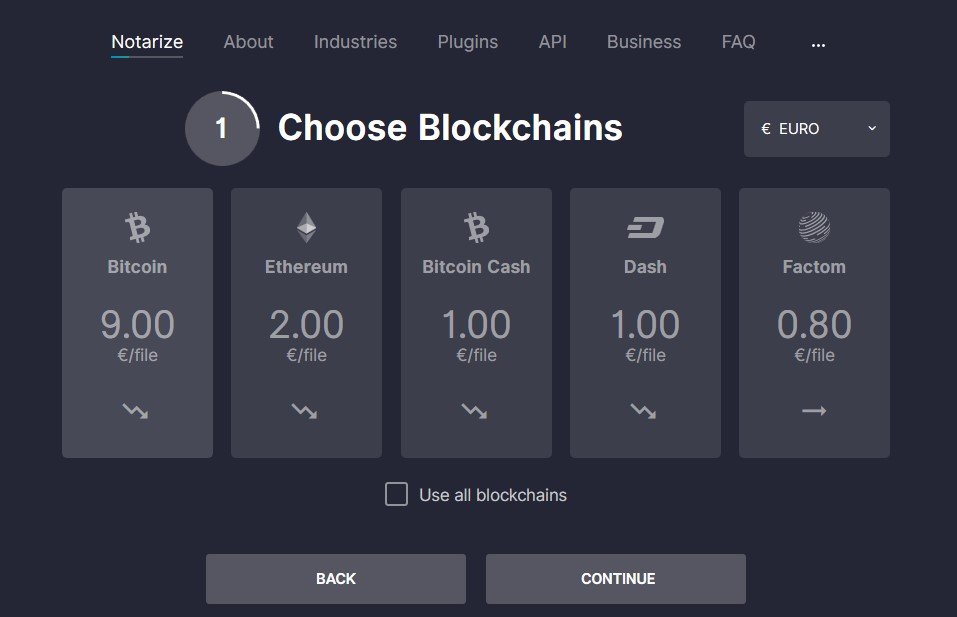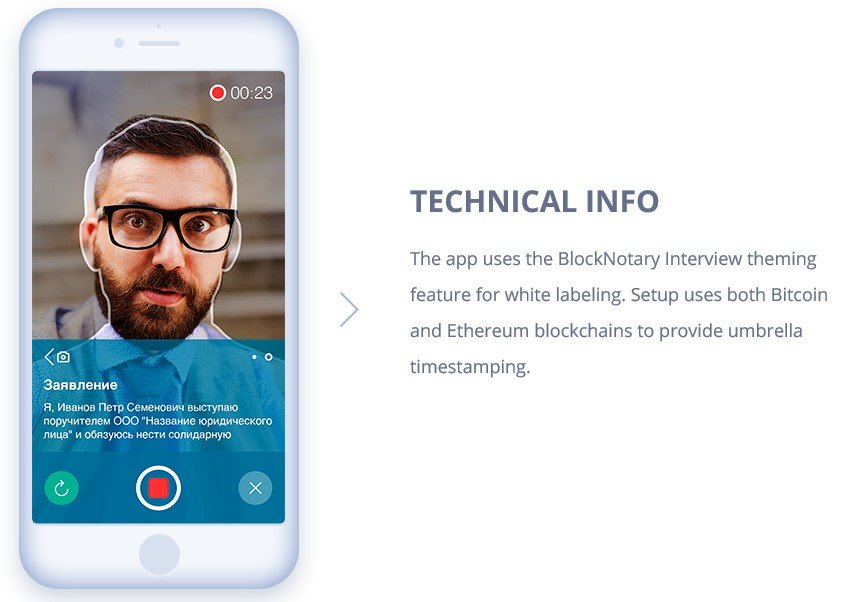Notary and blockchain — the perfect combination?

The use of distributed ledger technology in notarial activity seems to be one of the most obvious applications. The blockchain allows keeping records in such a way that they cannot be edited or deleted. It does not require the liability of a third party — an intermediary, a person you need to trust. However, these services have not been widespread and there are several reasons for this.
Blocknotary
This company has developed several services for different groups of users. The Interview service is intended for business and allows a user to identify and automate the service in the video interview process. Blocknotary provides its platform and services for creating a mobile application for users on its base and a remote system for interviews processing.

For those notaries who work in the United States, the company offers an electronic Journal as an alternative to ordinary paper journals. Journal stores records in the blockchain, is accessible both from a mobile application and a web version. The actions of the notary to be registered are easy to add, view and print. They are encrypted cryptographically and are protected by the blockchain from being edited or deleted by outsiders.
Timestamp is another Blocknotary service. It works on mobile devices and is designed to confirm the authenticity, integrity and copyright of media files. User-uploaded photos are stored in a blockchain-protected distributed file system. The platform generates digital certificates that can be demonstrated to other people and provide them with the opportunity to verify the authenticity or authors’ rights.
Blocknotary developers devote a special section of the website that will familiarize their users with the US state of Vermont legislation, where the use of blockchain technologies has been approved by the authorities to confirm the authenticity of records. Reportedly, three more US states have similar plans.
SilentNotary
SilentNotary provides three main options:
- notarizing phone calls — you can record a call in order to keep it unchanged later with confirmation of the date and time;
- video notarization in order to provide evidence and complete information about incidents related to insurance claims;
- certification of website content for authenticity and authorship confirmation.

The user can work with the service using several channels:
- email-address — the SilentNotary client sends data (file) to a specific mailbox, which must be saved and notarized;
- a mobile application which allows creating audio and video recordings for notarization;
- a chatbot in messengers which allows to create group chats and save data of many users;
- web interface for downloading data and notarizing web pages.
SilentNotary technology is presented in the form of several blocks:
- interfaces for user communication with the service;
- a function that creates a hash of information received from the client (with the necessary data about time, date, owner);
- a cloud storage system that records archives with these files;
- smart contracts for working with a distributed registry;
- blockchain itself (or DAG, if it is selected) with the hash of the data provided by the user.
The developers claim that one of the most important and most difficult tasks is giving legal status to the evidence from SilentNotary, valid for the authorities. To advance in this difficult matter, it is planned to draw up instructions for using the service for judges and lawyers, as well as create a global ecosystem of lawyers working with SilentNotary.
Stampd
It is one of the most well-known notarization services for users. With its help, you can create a unique digital fingerprint of any file with just a few moves, write it down to the selected blockchain (or several at once) from among those offered: Bitcoin, Ethereum, BitcoinCash, Dash, Factom.

The principle of operation of the Stampd system: the file loaded by the user is subjected to hashing using the SHA256 algorithm. Together with the file itself, a set of metadata is recorded. A hash created in this way is placed into one of the blocks of the distributed registry using a transaction. A new entry in the blockchain is confirmed by a certificate in the form of a pdf file, in which data on time, address, block number and transactions are indicated.
The developers of Stampd believe that their service will be useful for wide user groups: designers, engineers, researchers, lawyers and notaries. In the FAQ of Stampd, the answer to the question “How will evidence based on the blockchain work in court?” is the following:
“As the blockchain technology concept is relatively new, there is no experience on how the above would stand in a court of law. Despite that, any experienced IT/Computer science expert witness could testify to confirm the blockchain timestamping immutability and certify any pertinent timestaping proof against court.”
Blockchain does not compete with notaries
In those states where notaries do not carry much weight in the legal system and do simple work, blockchain services may have a chance for development: they can compete in terms of convenience and functionality with people.
For countries where the notary is a professional lawyer, whose work within the legal system is one of the basic units of primary justice, the emergence of blockchain services that can perform at least a part of people's duties is quite doubtful.
Thus, even in an area where the blockchain would seemingly take its rightful place, the advantage of this technology is far from obvious.
Image courtesy of Pymnts